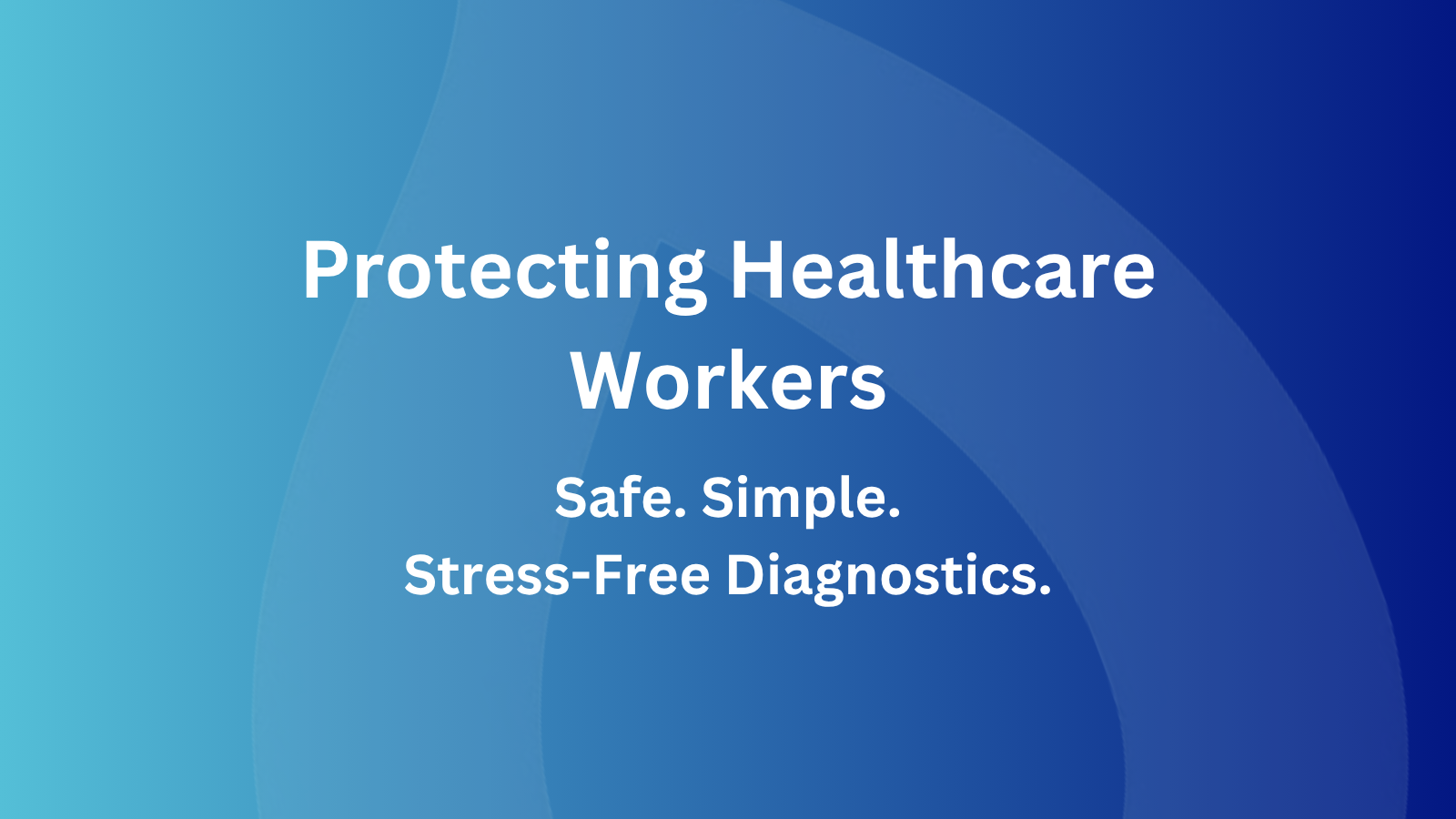How Saliva Testing Reduces Diagnostic Risk for Healthcare Workers
Healthcare workers (HCWs) are the backbone of any medical system, often placing themselves on the front lines during health crises. Yet, their work comes with risks, and this is especially during infectious disease outbreaks.
Traditional diagnostic methods, particularly those relying on blood samples, expose both patients and providers to potential hazards. Saliva-based diagnostics are changing this landscape, offering a safer, simpler, and highly effective alternative that protects healthcare professionals while maintaining the highest standards of care.
The Hidden Risks of Traditional Testing
Blood draws have long been the gold standard for diagnostic testing. However, the process is not without its dangers.
Every needle stick carries a risk of accidental exposure to blood-borne pathogens such as HIV, hepatitis viruses, and other infectious agents. These risks are compounded in high-pressure environments, where rapid testing and high patient volumes increase the likelihood of errors or accidental needle sticks.
For healthcare workers, even a single exposure incident can have serious consequences. The psychological burden of potential infection, coupled with the logistical challenges of post-exposure protocols, can affect both morale and staffing.
Moreover, blood draws require strict sterilization procedures and specialized training, further complicating workflows during outbreaks or in resource-limited settings.
Saliva Testing: A Safer Path Forward
Saliva-based diagnostics offer a compelling solution to many of these challenges. Unlike blood draws, saliva collection is entirely non-invasive and does not require needles or specialized equipment. This simple shift dramatically reduces the risk of accidental exposure to blood-borne pathogens for healthcare workers, making saliva testing an attractive option for routine screening and mass testing scenarios.
The process is straightforward: patients provide a saliva sample, often by spitting into a sterile tube or using a swab. The sample can be collected by the patient themselves or with minimal assistance from a healthcare provider, further reducing close contact and potential exposure. This ease of collection is especially beneficial in high-risk settings, such as during the COVID-19 pandemic, where minimizing contact was critical to controlling the spread of infection.
Real-World Impact: Lessons from the COVID-19 Pandemic
The COVID-19 pandemic highlighted the urgent need for safer, scalable testing solutions. Saliva testing quickly (with tests such as SaliCov, a CE-approved COVID-19 rapid saliva test) emerged as a valuable tool for screening healthcare workers, particularly for detecting asymptomatic or pre-symptomatic cases that might otherwise go unnoticed. Studies have shown that saliva-based RT-PCR tests are as sensitive as nasopharyngeal swabs in identifying SARS-CoV-2 infections, with the added benefit of being easier and safer to administer. This is all with respect to the importance of integration of various body fluid to maximize diagnostic window
Routine saliva testing in healthcare settings not only protected workers but also helped prevent outbreaks among vulnerable patient populations. By enabling rapid, frequent, and non-invasive screening, saliva diagnostics allowed for early identification of infected individuals, reducing the risk of transmission within hospitals and care facilities. In some studies, saliva positivity even anticipated the onset of symptoms by several days, providing a crucial window for intervention.
Beyond Infectious Disease: Broader Benefits for Healthcare Workers
The advantages of saliva testing extend well beyond pandemic response. For genetic testing, hormone monitoring, and routine screenings, saliva offers a painless and stress-free alternative to blood draws. This is particularly important for healthcare workers who may undergo regular occupational health screenings or participate in research studies.
The reduction in procedural risk and discomfort can lead to higher compliance and more frequent monitoring, ultimately supporting a healthier workforce.
Moreover, saliva-based diagnostics are scalable and cost-effective. They require less training, fewer resources, and can often be processed using portable or point-of-care devices. This flexibility is especially valuable in resource-limited settings or during surges in testing demand, where traditional laboratory infrastructure may be stretched thin.
A Patient- and Provider-Friendly Future
The shift toward saliva-based diagnostics represents more than just a technological advancement—it’s a step toward a safer, more accessible healthcare system for both patients and providers. As we previously highlighted, saliva testing empowers healthcare workers by reducing their risk of occupational exposure while delivering rapid, reliable results.
Patients, too, benefit from the convenience and comfort of saliva collection. For those anxious about needles or unable to access traditional healthcare facilities, saliva testing offers a dignified and approachable alternative. This dual benefit—protecting both the tester and the tested—positions saliva diagnostics as a cornerstone of modern, resilient healthcare.
Invisible Barriers, Visible Solutions
Healthcare workers face enough challenges without the added risk of occupational exposure during diagnostic testing. Saliva-based diagnostics break down these invisible barriers, delivering visible solutions that safeguard those on the front lines. As the healthcare landscape continues to evolve, embracing safer, smarter testing methods like saliva diagnostics is not just an option—it’s a necessity for the well-being of our healthcare heroes and the communities they serve.


